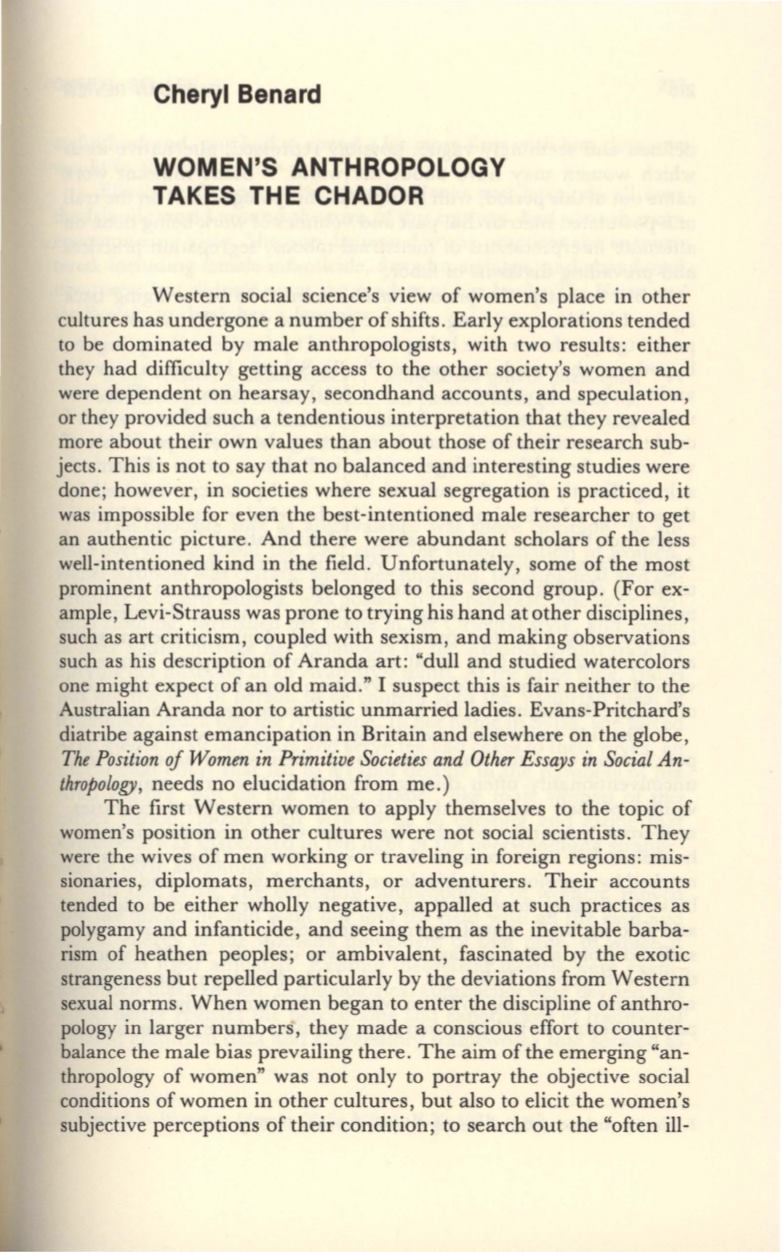
Cheryl Benard
WOMEN'S ANTHROPOLOGY
TAKES THE CHADOR
Western social science's view of women's place in other
cultures has undergone a number of shifts . Early explorations tended
to be dominated by male anthropologists, with two results : either
they had difficulty getting access to the other society's women and
were dependent on hearsay, secondhand accounts, and speculation,
or they provided such a tendentious interpretation that they revealed
more about their own values than about those of their research sub–
jects. This is not to say that no balanced and interesting studies were
done; however, in societies where sexual segregation is practiced, it
was impossible for even the best-intentioned male researcher to get
an authentic picture. And there were abundant scholars of the less
well-intentioned kind in the field. Unfortunately, some of the most
prominent anthropologists belonged to this second group. (For ex–
ample, Levi-Strauss was prone to trying his hand at other disciplines,
such as art criticism, coupled with sexism, and making observations
such as his description of Aranda art : "dull and studied watercolors
one might expect of an old maid." I suspect this is fair neither to the
Australian Aranda nor to artistic unmarried ladies . Evans-Pritchard's
diatribe against emancipation in Britain and elsewhere on the globe,
The Position of Women in Primitive Societies and Other Essays in Social An–
thropology,
needs no elucidation from me .)
The first Western women to apply themselves to the topic of
women's position in other cultures were not social scientists. They
were the wives of men working or traveling in foreign regions: mis–
sionaries, diplomats, merchants, or adventurers . Their accounts
tended to be either wholly negative, appalled at such practices as
polygamy and infanticide, and seeing them as the inevitable barba–
rism of heathen peoples; or ambivalent , fascinated by the exotic
strangeness but repelled particularly by the deviations from Western
sexual norms . When women began to enter the discipline of anthro–
pology in larger numbers, they made a conscious effort to counter–
balance the male bias prevailing there . The aim of the emerging "an–
thropology of women" was not only to portray the objective social
conditions of women in other cultures, but also to elicit the women's
subjective perceptions of their condition; to search out the "often
ill-


